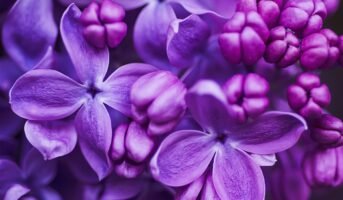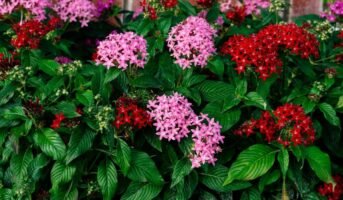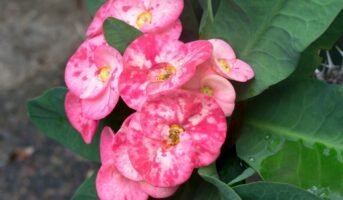Togor flower (Tabernaemontana Divaricata) or Chandni flower plant, also known as the pinwheel flower, is a majestic evergreen flowering shrub that is indigenous to South Asia, Southeast Asia, and China. In English, it is also known as crape jasmine. Other names for it include moon beam, Nero’s crown, tagar plant, tagar tree, east Indian rosebay, and carnation of India.
It is planted as a house or greenhouse plant in climates where it is not hardy because of its lovely flowers and foliage. When damaged, the stem releases a milky latex, giving rise to the name “milk flower”.
See also: All about Allamanda Plant
Chandni flower: Key facts
| Scientific name | Tabernaemontana Divaricata |
| Common name | Tagar plant, Tagar tree, east Indian rosebay, Nero’s Crown, moonbeam or carnation of India |
| Native | South Asia, Southeast Asia, and China |
| Height | 4-5 feet |
| Flower colour | White bloom |
| Sunlight | Direct – partial |
| Flowering season | Throughout ( except winters) |
| Best time to grow | Mar-May & Aug – Sep |
| Maintenance | Low |
Chandni flower: Physical description

- The plant typically has dichotomously branched stems and reaches a height of 1.5–1.8 metres (5–6 feet).
- The broad, lustrous leaves measure around 15 cm (6 in) in length and 5 cm (2 in) in breadth, and they are a deep green colour.
- On the stem tips, the waxy blooms are grouped in tiny clusters.
- It is grown in both single- and double-flowered varieties, and both varieties have white flowers.
- Although the Togor plant blooms in the spring, flowers can occasionally be seen all year.
- The blossoms of the Togor flower have a lovely scent.
See also Know about: Moon Flower
Types of Chandni flower plant
There are primarily six different types of Channi flowers you can grow in your garden. These include:
Single Chandni
This type of Chandni flower plant produces beautiful blooms in shades of white or cream with petals arranged in a single row. It is a popular choice for gardens and landscaping projects due to its simplicity and elegance.
Double Chandni
The Double Chandni flower plant produces gorgeous, full blooms with two layers of petals. It is a highly sought-after variety for its stunning beauty and is often used in floral arrangements and decorations.
Mini Chandni
As the name suggests, this type of Chandni flower plant produces smaller blooms than the other varieties. However, what it lacks in size, it makes up for in abundance, producing large numbers of delicate, fragrant flowers.
Pink Variety
The Pink Chandni flower plant produces lovely pink blooms that add a pop of colour and vibrancy to any garden or landscape. Its petals are a lovely shade of light pink with a dot of dark pink in the centre.
Chinese Variety
The Chinese Chandni flower plant produces blooms with a unique shape and texture, resembling a pom-pom or a round ball. It is a highly coveted variety as it produces plenty of flowers quickly.
Variegated Chandni
This type of Chandni flower plant produces beautiful blooms as well as lovely leaves in white and green. It is a popular choice for gardens and landscaping projects due to the unique and eye-catching appearance of its flowers and foliage.
Chandni flower: How to grow?
- Pick a stem that sprouted this year that is healthy and semi-hard. Look for a stem that is growing new leaves and is green. It must still be adaptable.
- Cut the stem between 4 and 6 inches (10 and 15 cm) long with small pruning shears. The stem should ideally be cut slightly below a leaf.
- If you make a cut directly below a leaf node, the stem will be more likely to produce healthy roots.
- Eliminate the leaves from the cutting’s base. Make sure no leaves are buried in the potting soil below the surface.
- However, if the cutting’s top few leaves are left on the stem, it will have a better chance of catching root.
- Flowers from the cutting should be deadheaded. By doing this, you can increase the health of your cutting.
- Flowers will naturally attempt to set seed and will do so by consuming nutrients from the rest of the plant.
- Additionally, mould will grow on dead blooms, harming the remainder of the cutting. Put some potting soil in a small container.
- Put fertile, pre-mixed potting soil inside the container. Since you’ll be transplanting the cuttings after they develop roots, it’s appropriate to use a single pot for several cuttings. Water the soil gently afterwards.
- Since the cuttings don’t yet have roots, you shouldn’t water them after putting them in the ground.
- Pre-moist the soil instead. The clipping should be placed in ready-made potting soil.
- To compact the earth surrounding the cutting, use your finger. With caution, press the soil up against the stem without moving it.
- By the time you’re done, the potting soil’s top ought to be firmly pressed up against the cutting.
- Place the cutting in the sun. A windowsill with plenty of sunlight is a nice spot.
- To survive, Togor requires a significant amount of sunlight.
- Allow the plant to grow roots for 4-6 weeks. You can move your cuttings into a new container once the roots have developed.
- Place the cutting in a pot or hanging basket. Togor thrives in a container and can be kept indoors or outdoors as long as it receives enough sunlight.
Chandni flower: Care tip

Chandni flower: Sunlight requirements
For better plant growth, keep the plant in an area that receives plenty of direct sunlight. Togor plant thrives best in direct sunlight.
Chandni flower: Soil requirements
The soil should have a high organic content, be fertile, and have good drainage.
Chandni flower: Watering requirements
Plants in pots will dry out much more quickly and require more frequent watering. Check the moisture level in the soil by poking it with your finger or a plain little stick. When the top inch or two of soil feels dry to the touch, water it. Water your plants liberally in the summer and sparingly in the winter and rainy seasons.
Chandni flower: Fertiliser requirements
Feed the plant with organic fertiliser once a month throughout the primary growing season. To enable the plant to absorb nutrients and moisture more readily, loosen the topsoil without disturbing the plant’s roots.
Chandni flower: Temperature requirements
Since the Togor plant is an Indian native, it enjoys warm climates. Therefore, any temperature between 20 and 35 degrees Celsius will be suitable for it.
Chandni flower: Repotting
Repot a plant with new potting soil and nutrients when it outgrows its existing container. Repot the plant in the evening, keep it in a shaded area for two to three days, and then relocate it to a location with the right climate.
Chandni flower: Protection
Get rid of any damaged, diseased, or dead plant parts far from the planting area. As a first preventive measure against any insect or pest attack, mist neem, eucalyptus, or citrus oil.
Chandni flower: Pest and diseases
Pests may attack it, devouring the leaves and causing holes in it in the process.
You should do this by regularly looking for and removing such leaves.
Neem oil can be used as an organic pesticide, which you can then spray on the leaves.
Chandni flower care: Don’ts
- Togor thrives in air-conditioned spaces but not near the vents.
- Avoid any time of year when there is a danger of frost.
- It is possible to grow it during the monsoons, but if you are growing it on the ground, make sure the water doesn’t remain close to the roots for an extended period since this will lead to root rot.
- To prevent overwatering by rain, if growing in pots, place the container under a green net or some other type of shade.
- Avoid over watering the plant, particularly if the pot lacks drainage holes.
Chandni flower: Uses
- It might have hypnotic and sedative (sleep-inducing) qualities.
- It might possess anticonvulsant properties (may reduce seizures).
- It might have qualities that help concentration.
- Potentially antispasmodic (may relieve muscle spasm). Additionally, it can be used to relax muscles.
- It has a calming and sedative impact on the brain.
- It provides short-term relief for mild anxiety, uneasiness, and insomnia.
- Togor has traditionally been used to treat intestinal spasms, nervous stomach (digestion influenced by the stomach), and colic (severe abdominal pain, usually in babies).
- Togor has a bitter taste that could aid with appetite and digestion.
- It reduces Vata and Kapha.
- Additionally, it has carminative and gas-relieving properties.
- Togor may lower blood pressure and reduce heart rate.
- Dried roots of Togor can be soaked in boiling water to make tea.
Chandni flower: Toxicity
Like many other members of the Apocynaceae plant family, Togor is toxic. It has atropine-like alkaloids and glycoalkaloid solanine, both of which are toxic to dogs if consumed by them.
FAQs
How to avoid overwatering<b> </b>Chandni flowers?
When growing in pots, cover the pot with a green mesh or some other type of shade to prevent rainwater from overwatering the plant.
Where to keep the Chandni flowers at home?
Maintain the plant's position in strong, direct sunlight. As long as the plant receives adequate sunlight, you can keep this plant in hanging baskets.
Housing News Desk is the news desk of leading online real estate portal, Housing.com. Housing News Desk focuses on a variety of topics such as real estate laws, taxes, current news, property trends, home loans, rentals, décor, green homes, home improvement, etc. The main objective of the news desk, is to cover the real estate sector from the perspective of providing information that is useful to the end-user.
Facebook: https://www.facebook.com/housing.com/
Twitter: https://twitter.com/Housing
Email: [email protected]











